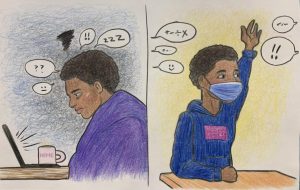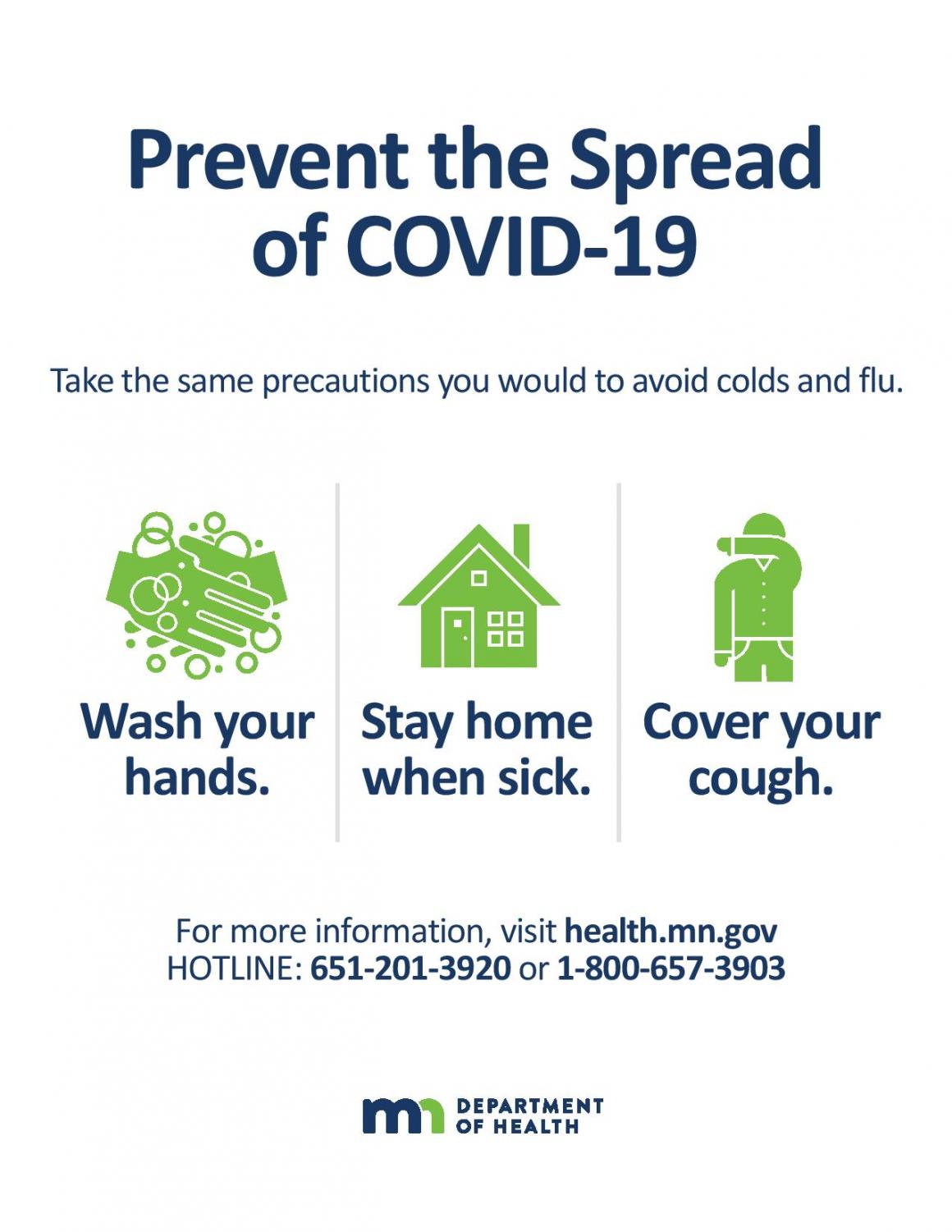Heights from Home: imperfect but works for many
February 22, 2021
Distance learning is something important to understand whether you are a student, teacher, parent or somehow involved in the future of education. With Columbia Heights High School and Columbia Academy students possibly going back in person as soon as March 15, it is crucial for families to weigh their options on whether or not to return after a year of not being in school.
Distance learning often involves platforms of large video calls such as Zoom or Google Meets that allow a classroom to come together, along with digital worksheets, photo submissions and online tests. Distance learning rose in popularity to help schools, especially ones located in cities that were COVID-19 case hotspots like Columbia Heights, help protect and lessen the spread of COVID and mitigate families’ risk of infection and exposure.
The worry of getting to school on time has been something on parents’ and students’ minds for years. Questions of truancy and tardiness (especially during the winter months) have always been important. According to Bellwether Education Partners, a lack of transportation can contribute to a lack of education. Many parents live in low-income areas, out of district or out of the bussing boundary, and if they don’t have personal or public transportation provided, it can be hard for students to get to school. Distance learning introduced students to staying at home to learn, making it so there is no need to worry about transportation.
Lack of transportation isn’t the only thing to worry about when it comes to going back in person. Bus outbreaks have been a threat, and while seating on busses might be socially distanced, drivers are still picking up multiple kids that end up sitting in different seats. Recently, outbreaks amongst transportation staff have been happening all around the United States from Bloomington, Minnesota to Collegeville, Pennsylvania.
In terms of actual class time, teachers often give students more independent time to work off Zoom, and more time to experience resources online. Not only does this help students develop a better sense of self-pacing, keeping a schedule and being independent, but it can also help them learn and improve on skills such as critical thinking, independent problem solving, and technological skills.
Yes, a parent’s life can get busy and distance learning isn’t always ideal if the caregiver has to run out of the house to deal with errands or have to work during the day. Babysitters and daycare can be expensive to hire for young kids, but if a parent has older children, they can be tasked to babysit or watch their younger siblings. Students that are doing distance learning are more likely to be able to help, seeing as they can physically be there and lend a helping hand around the house in between lessons and assignments.
“Distance learning is hard, but it’s better than going to school because I don’t want to worry about getting Covid,” Naima Hassan (9) said.
While distance learning has many benefits, there is a pressing issue and that is the worry of lacking social interaction. According to a study on loneliness and social isolation conducted by the CDC, having poor social relationships is often associated with an increase of 32 percent for the risk of having a stroke and an increase of 29 percent for the risk of heart disease.
Despite this, many schools have found solutions, regularly go out of their way to hold extracurriculars, sports, and game and movie night via Zoom meetings. This shows how distance learning makes up for the lack of social relationships. Another alternative that teachers use often during school is breakout rooms, where teachers often encourage students to unmute or participate via chat with other peers.
While technology is beneficial in so many ways during the pandemic, many students have had to deal with numerous issues, whether it’s a broken microphone or not being able to screenshot something on your laptop—or just having a bad wifi signal. There is no doubt that learning how to use technology can prove difficult, but many schools (including both CHHS and CA) often leave links, phone numbers, and emails to help access technology experts. As for unreliable wifi connections, schools have worked hard to supply families in need with free and easily accessible hotspots, or in some cases, reduced-price wifi service.
“I think that distance learning is great for students who are self-motivated and independent learners or students who are able to have a quiet, safe space to learn,” social studies teacher and Link Crew Adviser Ms. Jen Ancel said. “Hybrid is tough because teachers have to teach kids on the computer at the same time as students in the classroom. That limits your choices of activities.”
Ultimately, everyone needs to figure what method of learning could be most beneficial for you or your children, but public schooling often means choosing what will best serve the social, education, and safety needs of the majority of students. Distance learning is much more secure and convenient for many, with new alternatives created in just the past year used to combat the adversities that come with the format. Hybrid learning provides connections for students with peers and teachers safely as possible, but is it worth the risk associated when our answers for education during difficult times are already here at our fingertips?





